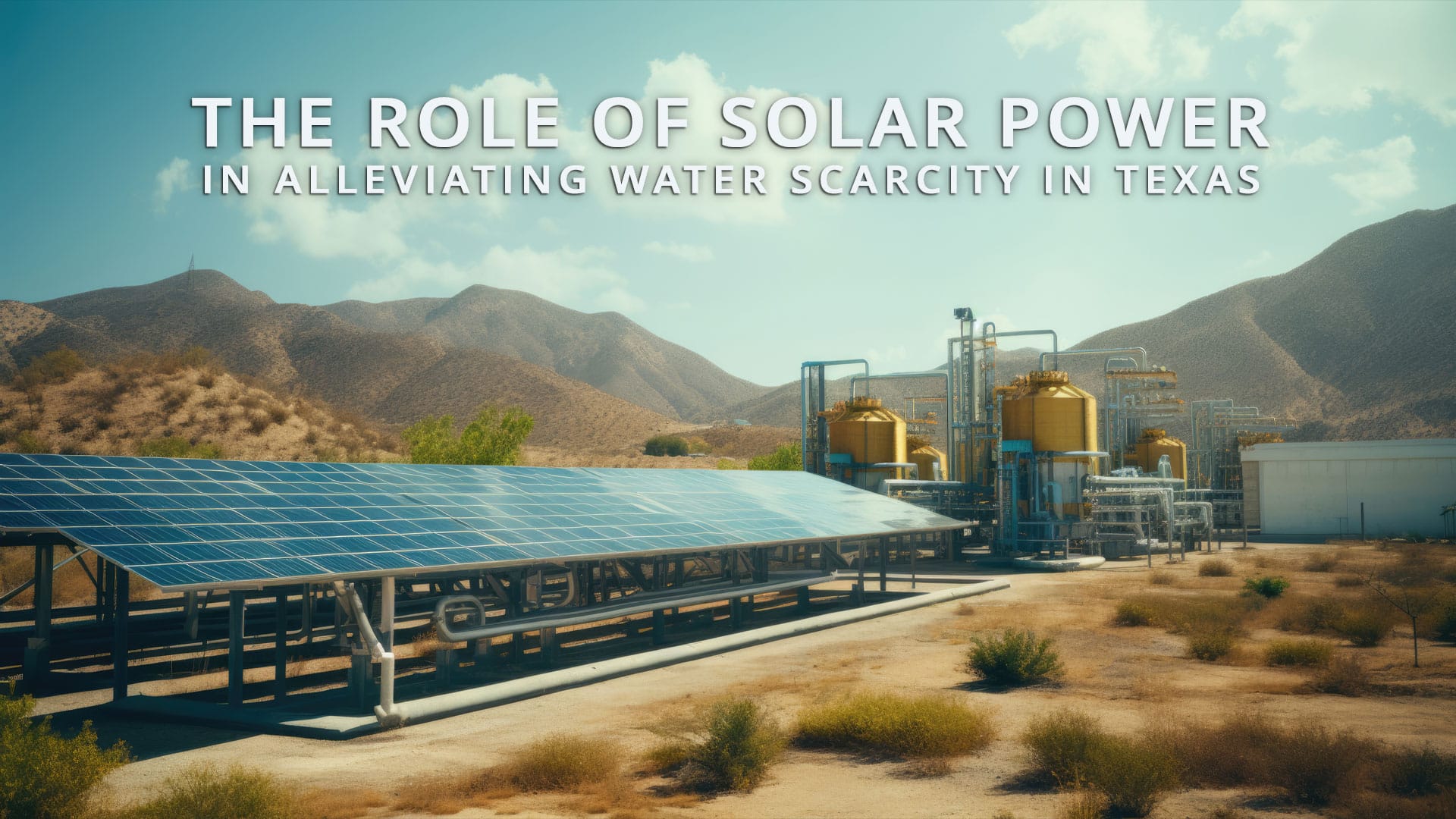Solar Power in Alleviating Water Scarcity in Texas
 In the arid landscapes of Texas, where water scarcity is a pressing concern, a solution emerges from an unexpected source—the sun. As the Lone Star State grapples with water challenges, solar power is stepping into a pivotal role, offering innovative solutions to address this critical issue. In this blog post, we explore how solar technologies are becoming instrumental in enhancing water sustainability, reshaping the narrative of water management in Texas.
In the arid landscapes of Texas, where water scarcity is a pressing concern, a solution emerges from an unexpected source—the sun. As the Lone Star State grapples with water challenges, solar power is stepping into a pivotal role, offering innovative solutions to address this critical issue. In this blog post, we explore how solar technologies are becoming instrumental in enhancing water sustainability, reshaping the narrative of water management in Texas.
The Water Scarcity Challenge in Texas
Texas has long faced the formidable challenge of water scarcity, but increasing population, unpredictable weather patterns, and competing demands from various sectors have strained water resources even further, leading to concerns about long-term sustainability. In this scenario, harnessing the power of the abundant Texas sun presents a unique opportunity to revolutionize water management practices.
Solar Desalination: Turning Seawater into a Viable Resource
- The Basics of Desalination
- Desalination, the process of removing salt and impurities from seawater, has long been a promising solution to water scarcity. However, traditional desalination methods are energy-intensive and often rely on non-renewable sources, presenting environmental challenges. Solar desalination, powered by the sun’s energy, offers a sustainable alternative.
- Solar Desalination Technologies
- Photovoltaic-Powered Desalination: Solar panels convert sunlight into electricity, which can then power desalination processes, such as reverse osmosis. This approach minimizes the carbon footprint associated with desalination, aligning with the global push for cleaner, greener solutions.
- Solar-Thermal Desalination: Concentrated solar power is utilized to generate high temperatures, driving the desalination process. This method is particularly effective in regions with abundant sunlight, making it well-suited for Texas.
Solar-Powered Irrigation Systems: Nurturing Agriculture Sustainably
- The Agriculture-Water Nexus
- Agriculture is a significant consumer of water in Texas, and traditional irrigation practices can be inefficient. Solar-powered irrigation systems offer a sustainable solution by providing an energy-efficient means of drawing and distributing water for crop cultivation.
- Advantages of Solar-Powered Irrigation
- Off-Grid Solutions: Solar-powered irrigation systems can operate independently of the electrical grid, making them suitable for remote agricultural areas where access to electricity may be limited.
- Variable Speed Pumps: Solar-powered pumps with variable speed settings can be adjusted to match the specific water needs of crops, reducing water wastage and ensuring optimal irrigation.
Enhancing Water Efficiency with Solar-Powered Monitoring Systems
- Real-Time Monitoring and Control
- Solar-powered sensors and monitoring systems provide real-time data on water usage, enabling precise control over irrigation and water distribution. Farmers and water management authorities can make informed decisions to optimize water efficiency.
- Smart Leak Detection
- Solar-powered systems can incorporate smart leak detection technologies to identify and address water leaks promptly. This proactive approach minimizes water losses and ensures that every drop is used efficiently.
Solar Innovation and Water Education
- Educational Initiatives
- Solar-powered water projects not only address immediate water scarcity issues but also serve as educational tools. Integrating these technologies into educational programs raises awareness about sustainable water practices, fostering a sense of environmental stewardship among communities.
- Community Engagement
- Solar-powered water solutions can be implemented in community-centric projects, creating a sense of shared responsibility for water conservation. This collaborative approach strengthens the resilience of communities and ensures the long-term sustainability of water resources.
Challenges and Future Prospects
- Overcoming Implementation Challenges
- While solar-powered water solutions hold immense promise, their widespread implementation requires overcoming challenges such as initial costs and adapting to local conditions. Public and private stakeholders must collaborate to develop strategies for successful integration.
- The Path Forward
- As technology advances and awareness grows, the role of solar power in addressing water scarcity is set to expand. Continued research, innovation, and strategic investments will be crucial in shaping a sustainable and water-secure future for Texas.
A Ripple in the Water Scarcity Pond
In addressing Texas’ water scarcity challenges, solar power emerges as a practical solution. The integration of solar technologies in desalination, irrigation, and smart monitoring offers a transformative approach to water management. As Texas strives for water conservation, solar power presents a promising future, where innovation, efficiency, and commitment converge.
To contribute to this vision and experience solar’s cost savings, consider starting your personal clean energy journey by embracing solar. Receive a complimentary quote today and discover how you too can harness clean energy and secure a more sustainable future for Texas.

































Leave A Comment